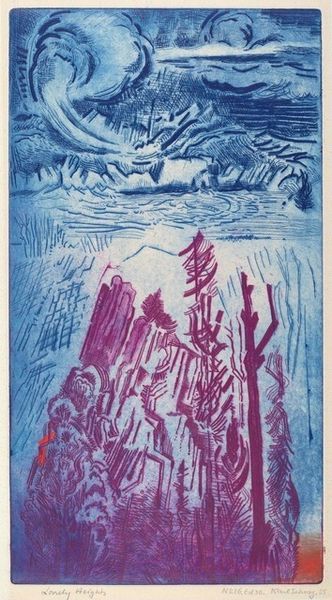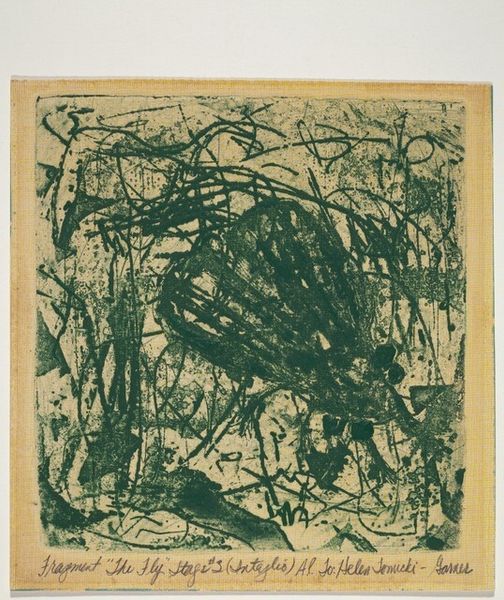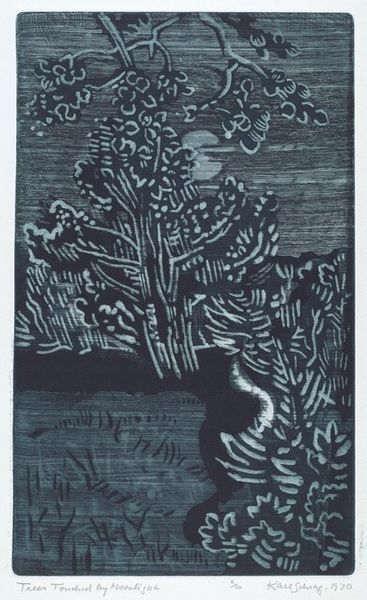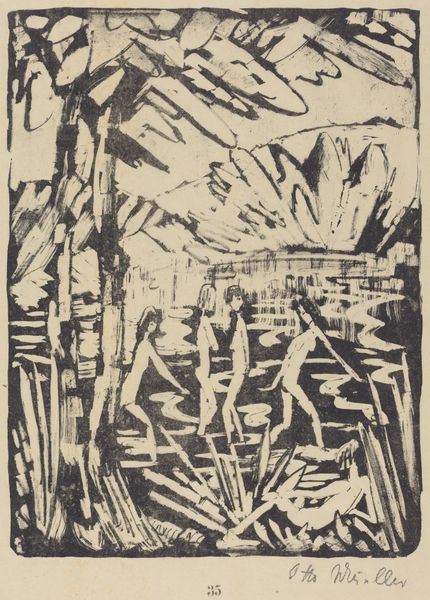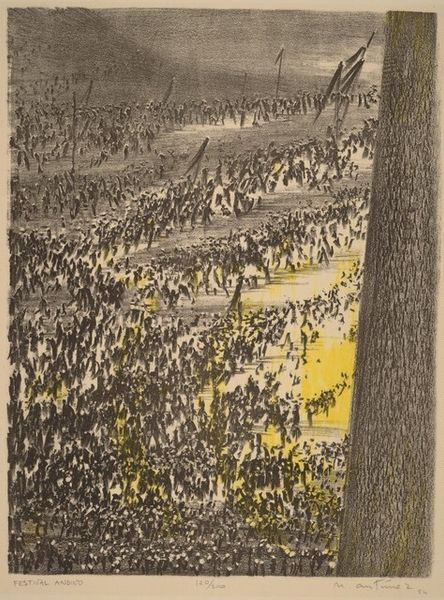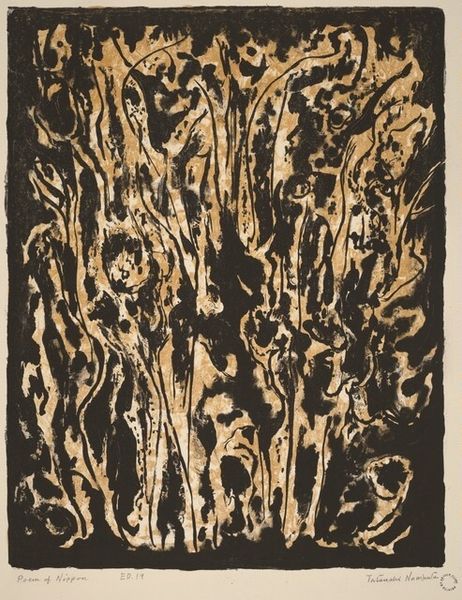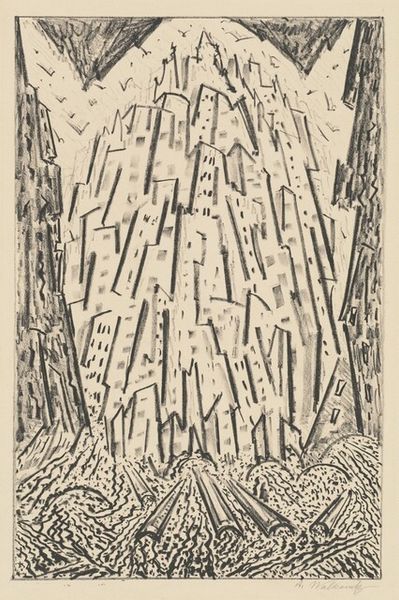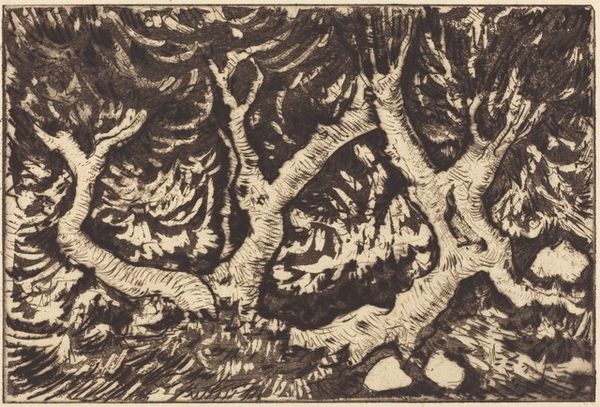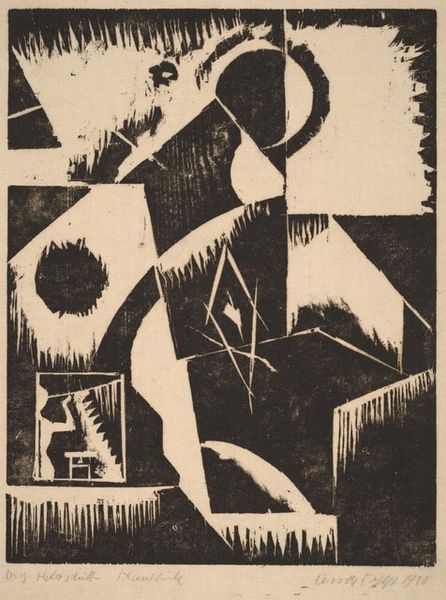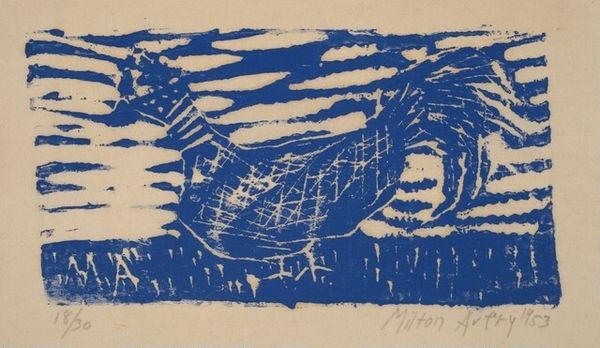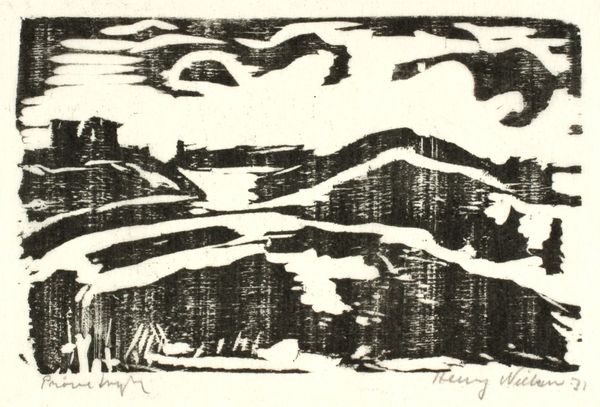
print, linocut
#
organic
#
linocut
# print
#
linocut
#
landscape
#
organic pattern
Copyright: National Gallery of Art: CC0 1.0
Curator: Welcome! Let’s discuss Fred Cain’s "Christmas Card" from 1966. It's a linocut print, primarily in a soft blue hue. Editor: My first impression is of quiet solitude. The bare trees and landscape have a stillness, like a breath held in the winter air. Curator: Linocut, as a printmaking process, often requires bold simplifications. Notice how the artist used a reductive method, carving away negative space to create the image. That would have necessitated a thoughtful consideration of the materiality, labor, and artistic production to complete it. Editor: Yes, that reductive method contributes to its strong symbolic character. Bare trees often symbolize starkness, resilience, and the cyclical nature of life and death – a potent image, particularly within the context of Christmas as a celebration of rebirth and new beginnings, a meditation on enduring hope. Curator: We must also note the democratic potential of printmaking at this time; it's a medium capable of producing multiples, allowing wider audiences to access art. A far cry from bespoke, inaccessible artworks meant for the privileged. Think too, how sending such cards served a kind of social labor of care, extending well wishes in a material form to other human beings. Editor: Absolutely, I see echoes of earlier, medieval woodcuts used for disseminating religious imagery and shaping cultural beliefs, now applied to the personal realm of holiday greetings. And that choice of blue itself... think of the many allusions, perhaps to winter, certainly evoking feelings of calm and reflection. Curator: Considering this print was crafted as a Christmas card speaks to a desire to embed art within daily life and social relationships. This wasn't art made for galleries or museums per se, but for direct, personalized consumption. It brings a sense of intimacy and direct exchange that’s fascinating in its simplicity. Editor: A poignant observation! The very act of sending carries an emotional weight; offering not just a design but a shared cultural touchstone. Even across the years, its message and motifs endure and encourage consideration. Curator: It's fascinating how the seemingly simple medium of a linocut can engage us on so many levels – from artistic method and labor to distribution networks and collective meaning. Editor: Indeed! It reminds us that images, however simple, connect us to wider traditions and resonate long after they are initially seen.
Comments
No comments
Be the first to comment and join the conversation on the ultimate creative platform.
